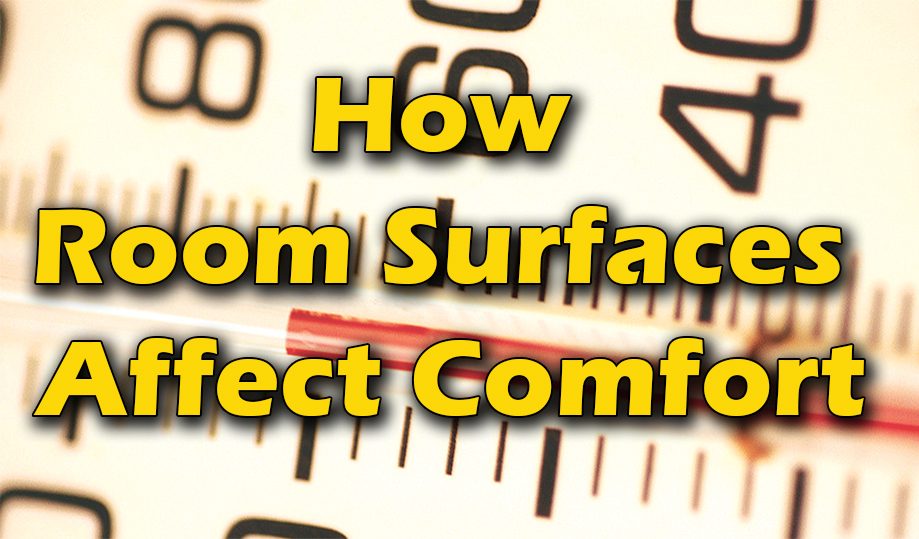That same 72° F air around the ankles could be moving at 90 fpm or more and would not be felt as a draft. As the air gets cooler, velocities must be reduced to avoid discomfort.
Natural Convection
Usually, air motion in a room results from “natural” conditions. In winter, room air contacts cold glass and cold exterior wall surfaces. This cools the air. Since the cooler air is heavier, it moves down the wall and across the floor.
In summer, the reverse occurs. Room air in contact with the warmer glass and walls is heated and becomes lighter.
This air moves upward and across the ceiling. Lights and appliances can produce their own local air currents as well. Such air motion is referred to as natural convection (air) currents.
While standing in front of that wavy-glass farmhouse window listening to the wind howl and watching the snow flakes swirl, it had not occurred to me why I shivered but it did stick firmly in my memory.
Lessons Learned
In my heating and air conditioning duct designs, it effects where I locate grilles in the floor or ceiling of a room. I locate them in the vicinity of a window whenever possible so the warmest air will be there to offset the radiant glass loss we all experience.
It effects my passion for well-insulated walls and warm floors. It also effects my efforts to convince home owners and architects to use the best glass possible in their window choices.
Radiant loss seems to be little understood in our business, but as you can see, it needs to be at the forefront of our understanding in order to provide our clients with cozy comfort!
Paul Wieboldt is president of Tradewinds Appropriate Technologies, Waco, TX. He has done most things when it comes to home remodeling and construction. He also started a private school, worked for a curriculum developer, and fell in love with teaching. In the mid-1980s he moved to Texas and began his career in HVAC. Several years later, he discovered NCI and was able to combine his experiences into a teaching focused on environmental comfort and health. Contact Paul for more information at paul@manualjdesign.com.













My uncles knew this back in the 1940s. They made the ceilings the radiant heat source in their homes. Their homes were the most comfortable winter homes I’ve ever been in.